Florida Currents
GLADES ELECTRIC











On this enchanting 9-day cruise from Charleston to Amelia Island, experience the charm and hospitality of the South. In the comfort of our modern fleet, travel to some of the most beautiful historic cities in America. The fascinating sites you visit, the warm people you meet, and the delectable cuisine you taste, come together for an unforgettable journey.
Small Ship Cruising Done Perfectly














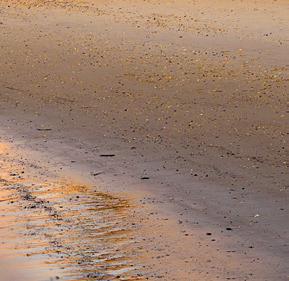















CEO Michael Shepard
VICE PRESIDENT OF CONTENT Leon Espinoza
EDITORIAL DIRECTOR Chasity Anderson, CCC
DEPUTY EDITORIAL DIRECTOR
Noble Sprayberry
SENIOR EDITOR Jennifer Paton, CCC
FLORIDA CURRENTS EDITORS
Valeri Pearon; Sable Riley, CCC
ASSISTANT EDITORS Victoria Hampton, CCC; David Herder, CCC
ASSOCIATE EDITOR
Nina Todea
PUBLICATIONS PRODUCTION
SENIOR MANAGER
Elizabeth Beatty
SENIOR PUBLICATIONS COORDINATOR
Alyssa McDougle
Members acknowledge that $4.49 a year, plus postage, is the cost to publish 12 issues a year of FLORIDA CURRENTS ISSN 23276304 (USPS 8300). Published by Pioneer Utility Resources Inc., 5625 NE Elam Young Pkwy. Ste. 100, Hillsboro, OR 97124—a not-for-profit Oregon cooperative corporation—the magazine serves the communication needs of consumerowned electric utilities in Florida. Preferred Periodicals postage paid at Hillsboro, OR 97123 and at additional mailing offices.
Postmaster: Send address changes to 5625 NE Elam Young Pkwy., Ste. 100, Hillsboro, OR 97124-6422.
HOW TO CONTACT FLORIDA CURRENTS
Subscription services:
Nonmember subscriptions $15 U.S. a year; $25 foreign a year. Prepayment required. Allow 4-8 weeks for first issue. Identify local edition desired. Have a problem receiving your magazine? Utility members should contact their utility office. Nonmembers call 503-357-2105 or email mailingdept@pioneer.coop. Back issues:
Back issues and extra copies are $3 each, prepayment required. Supply is limited. Identify edition, month and year. Call first to check availability. Contact Pioneer Utility Resources: P.O. Box 1306, North Plains, OR 97133-1306; 503-357-2105; email: mailingdept@pioneer.coop.
DISPLAY ADVERTISING INQUIRIES
American MainStreet Publications 611 S. Congress Ave. Ste. 504 Austin, TX 78704-1714; 800-626-1181 or 512-441-5200; amp.coop.
© 2025 Pioneer Utility Resources. All rights reserved. Reproduction in whole or in part without written permission is prohibited. Direct reprint requests to editor@floridacurrents.com or for more information, visit www.pioneer.coop.
January 2025 • Volume 14, No. 3 For additional content, search @FloridaCurrents on your favorite social media sites and floridacurrents.com.






Heartland residents begin working to start an electric cooperative to serve parts of Glades, Hendry and Highlands counties.




In fall 1944, Florida Heartland residents came together to form a locally-owned and -led electric cooperative to bring power to the rural communities left behind in electrification of homes and farms. This was made possible by President Franklin D. Roosevelt’s 1936 Rural Electrification Act, which provided federal loans to build electric distribution systems to serve rural America.
On Jan. 25, 1945, the first meeting of members took place in Moore Haven on the steps of the courthouse to select a co-op name and elect a board of trustees.

Neighbors worked for neighbors to meet the needs of the unserved, just as we’ve continued to do for 80 years. We’re proud to be owned by the people we serve—powering and connecting our Florida Heartland communities.

Jan. 29, 1945

Jan. 25, 1945
July 30, 1945
Bids open for construction of 150 miles of line to serve 240 members.
A request is submitted to the Rural Electrification Administration to build 132 miles of line and a generating plant.
May 12, 1945
a n u a r y

GEC’s first completed lines are energized, covering the area from west of Clewiston to just south of Road 70 in Highlands County.


Dec. 21, 1947

The next phase of Highlands County lines is energized, and services are connected by midnight Dec. 24. GEC’s energized lines total 220 miles, with 323 members receiving service.
1954
GEC’s generating plant is placed on permanent standby to address operating costs. The cost of the plant exceeded the cost of power purchased from other sources. It remained to occasionally supplement other power sources in times of increased load demand. By this time, Seminole Electric Cooperative had been formed to improve buying power by aggregating demand for Florida distribution cooperatives.

1960
1949
GEC builds its first power lines in Okeechobee County.




GEC’s first office building at the current Moore Haven location is built.
Sept. 16, 1963
GEC has 724 miles of line serving 2,111 members.


June 24, 1948
GEC’s power plant is completed, and two 840-kilowatt generators are put into service.

1971

GEC Board President O.N. Sykes presents a plaque to Richard Archbold—one of GEC’s first members—recognizing his 25 years of efforts to bring electricity to the rural areas of Highlands, Glades, Hendry and Okeechobee counties.




GEC continues to meet the needs of the unserved in the 21st century by announcing construction of a high-speed fiber internet network to serve all Glades Electric members via a partnership with Conexon Connect.



GEC serves more than 16,000 accounts, with nearly 2,600 miles of line.



GEC serves more than 18,000 accounts and celebrates 80 years of Neighbors Working for Neighbors.





2017
1975
GEC’s generating plant is permanently retired.
The SmartHub app is introduced to Glades Electric members.
1991
Jan. 3, 2024
The first Conexon customer on Glades Electric’s high-speed fiber network is connected.
Glades Electric’s Lake Placid office is built.
1989
GEC’s power plant is demolished.



What is it?
Operation Round Up is a program that allows members to round up their monthly bills to fund projects benefiting community members in need.
Nine members serve on the board of directors for Glades Electric Charitable Trust, a 501(c)(3) nonprofit organization. Directors review applications and approve grants.


District 7






Lake Josephine District 8


Byars Okeechobee
$5,779.71 in Operation Round Up funds awarded in November 2024 to four members in need.

How does it work?
$138 55 cents to your neighbor in need. The average yearly contribution is $6 per member.


Funds from Operation Round Up go right back into the communities we serve.


How can I help?


8,212 accounts participate in Operation Round Up or Operation Round Up Plus. Round Up Plus allows members to give even more, adding any set amount, $1 or more, to their bills each month.

Sign up for Operation Round Up in the SmartHub app or on your payment stub, stop by the office or call 863-946-6200.
9 raised through Operation Round Up and Round Up Plus in October 2024.
$4,376.74
Did you know?














How can I get help?
If you or a member you know needs financial assistance, please complete an application at: www.gladeselectric.com/community/operation-round-up. $137.45 Amount due: Power Bill














The participation rate it would take to raise more than $70,000 annually to support our communities. 75%
















































By Melanie Jones
Veterinarian John Logan’s days are a constant shuffle among tasks like tending to a bull with a leg scrape, a prized calf struggling to be born and even a mountain lion in need of a blood draw.

“You never know what each day is going to look like,” he says. “It keeps things
Now, with each new farm call, he fulfills a lifelong commitment to support farmers.
“I’ve always been kind of passionate about the beef industry and helping farmers out,” he says.
John splits his time between farms and the clinic, which has a haul-in area where large animals can be treated on-site.
A nearby big cat preserve recently introduced him to a somewhat prickly patient: a mountain lion needing a blood test.
“I’ve done some reptile things—bearded dragons, boa constrictors,” he says. “I’ve done birds, parrots. But the mountain lion’s probably the craziest one, though.”



As a veterinarian at Panhandle Veterinary Services in Chipley, John treats a remarkable mix of patients—from treasured pets that cozy up to firesides to hardworking farm animals that form the backbone of small-town life. Though Panhandle is a mixed-animal practice, John’s heart lies firmly with the large animals—beef cattle in particular.



“I get to be out of the office outside on the farm,” he says. “It’s kind of what I

His path to veterinary medicine was nearly set growing up on a beef cattle farm in South Georgia, but the experiences that followed solidified it. At Berry College in Rome, Georgia, John worked hands-on with the beef cattle unit, learning every corner of an industry he grew









While the clinic may focus on typical farm animals and pets,







Handling a creature of such power and unpredictability required a touch of nerve and plenty of precautions.




“We had to dart it before we could go in,” John says.
Panhandle Veterinary Services reaches far beyond Chipley’s 3,660 residents, covering a 50- to 60-mile radius to provide vital services to rural communities.

John’s clientele includes some wilder personalities.



“It brings a healthier, more profitable agriculture industry,”
John says. “It brings




















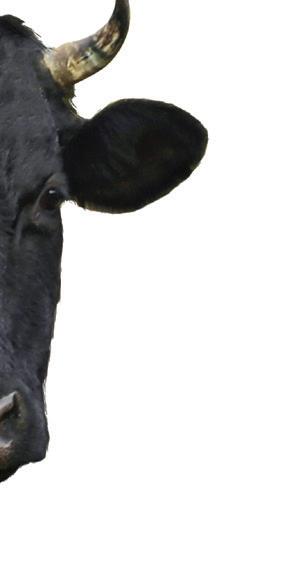



peace of mind to the farmers and to all the animal owners, whether it be dogs, cats, horses, cows, whatever.”
For many small-town farmers, the clinic is a lifeline, a place where they know they can find capable hands in desperate times.
“You’ve got to be able to have a place to go if you’ve got something that’s wrong,” John says. “We’re here for people in their time of need.”

Besides physical care, John sees education as a central part of his role, especially when it comes to helping farmers recognize the value of consistent veterinary care. He admits it’s sometimes a challenge, as some view veterinary visits as just another
The team includes Ann Lindholm, a Swedish-born veterinarian certified in international veterinary medicine. Megan Bollman focuses on forging strong relationships with clients, while Lauren Hardy’s specialties lie in equine sports medicine and surgery.
Dr. John Logan prefers to work on large animals, like beef cattle, but he treats everything from turtles to mountain lions.




“Clients require education so that they understand that I’m there to help them to try and get the most out of their farm and their animals,” he says. “Veterinarians are sometimes looked at by the farmers as a big bill, but in the end, consistent veterinary medicine work and herd health and things like that increase your profitability over time. It can be hard to get









Reflecting on his work, John says he feels a deep appreciation for the community’s gratitude. It’s a small-town camaraderie that adds special meaning to his role, reminding him his skills serve more than just animals—they serve the people who love them.






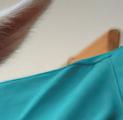






John’s journey to Chipley began in veterinary school at Lincoln Memorial University in Tennessee, where he met Panhandle’s former owner at a conference. The two hit it off, and John and his wife, Rachel Gusek, joined the clinic after graduation. She brings a passion for rehabilitation techniques. Today, they are part of a dedicated group of


grateful people










John Logan and his wife, Rachel Gusek, were happy to find a veterinary practice where they could work together.
PHOTOS COURTESY OF PANHANDLE VETERINARY SERVICES




“There’s a lot of people who are really grateful when you actually save their animal,” John says. “There’s been some who get emotional, hug you, cry and stuff like that. I mean, people bring cakes and baked goods. It just makes you feel appreciated.” veterinarians.

















I’ve done birds, parrots. But the mountain lion’s probably the craziest one, though.




— John Logan, Veterinarian
























By Drew Woolley
The Dasher family has farmed its land in Suwannee County, Florida, for five generations. In the 1940s, the family grew traditional row crops like corn and hay, the same as many farmers throughout the state. But by the late 1970s—10 years after Randall Dasher took over operations—the farm was at a crossroads.
“’77 was our first corn loss to just a massive drought,” Randall says. “In ’78, the blight came in and wiped us out, so we had two corn crops in a row that the weather got. It went over the hay bed, too. You might have a wet year, a dry year and then you have no control over the prices on your grains. So, we were looking for something to help stabilize the crop prices and the weather issues.”
In addition to kicking off a seed processing business, the popular move at the time was to open poultry houses. But when Randall looked into the bottom line and the labor involved, he realized there was a better option for Dasher Farm at a fraction of the price.
“We talked to growers in the poultry business and were right on the line of doing it until we came across the greenhouse business,” he says. “Hydroponics was a whole different system than growing field crops, but it wasn’t too hard to learn.”
Hydroponics is a space-efficient type of soilless gardening typically done indoors. With the help of another local farmer who had recently built a greenhouse, Randall learned the ropes of
growing crops in a controlled environment. Then, in 1986, Dasher Farm added its own greenhouse to the mix for growing tomatoes.
“In the greenhouse, you can control almost everything. Nature still plays a part, but you can protect it. There’s no overwatering, no rainy season, no drought,” he says. “You find your markets, pick a product and grow for that market. That way, you’ve got a pretty reliable income to count on when the outside crops are subject to weather and changing prices.”
That pivot made Dasher Farm one of the first in the state to embrace protected agriculture on a large scale.



According to Bob Hochmuth, assistant center director and regional specialized extension agent for the University of Florida’s Institute of Food and Agricultural Sciences, protected agriculture can include a variety of approaches that give farmers more control over their crops. These include high tunnel greenhouses, container farms and open shade structures.



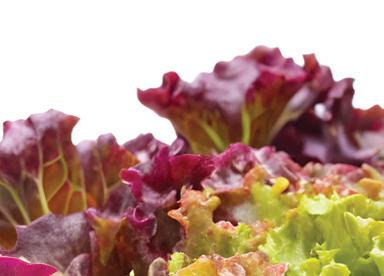









Those controlled systems offer better water conservation and more



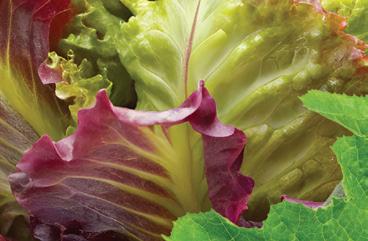




efficient use of fertilizer and can even help protect crops from pests and disease. As the produce market continues to change, the degree of control protected agriculture offers farmers is becoming less of a luxury and more of a necessity.
“The market demands you to be a consistent supplier,” Bob says. “So, the market doesn’t really want you to be in the deal for only eight weeks in and out. They want you to be a consistent supplier year-round. So being able to have environmental controls and manipulating the different production systems and things that we’ve been researching out here and other places affords the grower to be more in control of the product.”
Right now, much of that research is focused on optimizing factors such as ventilation, irrigation control and capturing carbon emissions that can make these protected systems more efficient. Ying Zhang, Ph.D., an assistant professor and controlled environments specialist at the University of Florida, is part of those efforts to make these systems less risky and more cost-effective for farmers. While there may have been some resistance to new technology in the past, she believes the main hurdle for farmers today is accessibility.

“Some farmers prefer to use human intuition or experience to make decisions rather than using technologies,” Ying says. “But they are really looking for solutions to improve their operation. I would say they are open to new technologies but want to have a more friendly-to-use tool. They are also looking for training opportunities and chances to work with experts in the field to help them to make the transition.”
For the Dasher family, Bob was an early ally when it came to learning the ropes of greenhouse farming. Bob was still a new extension agent when Dasher Farm installed its first greenhouse, but he was able to help them better understand the differences between field crops and greenhouse crops.
“It was learning how the plants feed and react to sunlight and overcast weather and stuff,” Randall says. “It’s more of a hands-on type of feeding them and taking care of them. It was different.”

Learning that new approach paid dividends. Randall started by growing tomatoes in the greenhouse but found he could harvest from them more often than his field crops. While his field tomatoes were what is known as a determinate crop—meaning they bear fruit only once a season—the greenhouse tomatoes were indeterminate
















and could bear fruit repeatedly throughout the season.
“We would plant the small plants in the pipes the first week or two of September and harvest tomatoes in 90 days,” Randall says. “But if we pruned the vines and suckers off the bottom as we harvested, we could keep harvesting tomatoes until May.”
As the greenhouse became a more significant part of Dasher Farm’s business, Randall built another and then another, before eventually replacing the individual houses in 2001 with a 42,000-square-foot, five-bay complex to grow herbs, lettuce and other crops. They have even experimented with chilling the nutrient water that feeds their crops to keep them cool for longer in the punishing Florida heat.
“As soon as he started harvesting from the greenhouse, he saw the immediate return and help with the household income,” says Sarah Dasher Carte, who returned home to help her father with the farm after graduating college in 2000. “So, we learned the business and just honed those skills a little bit year after year.”
Because the scale of the greenhouse crops has been smaller, it also requires different markets than traditional grocery stores. Bob
identifies the mid-2000s as a period when protected agriculture started to take off in Florida, in line with consumers’ growing interest in knowing where their produce came from. He helped farmers like the Dashers build relationships with wholesale buyers, local businesses and even larger farms like Traders Hill that can help their produce reach more people.
“In the very beginning, there were several of us that got into the greenhouse business, and we formed a little co-op, and we sold tomatoes to different buyers,” Sarah says. “Now, with the wholesale, Traders Hill and restaurants in town, it kind of takes all three of them to really keep the base going well.”
As with so many industries, that balance was nearly thrown off during the COVID-19 pandemic. The local school system was a major buyer of Dasher Farm’s lettuce. So, when schools announced they would be closing for two weeks, then two weeks more, then for the rest of the year, the Dashers were left with a load of unsold produce on their hands.


























“We ended up with two weeks’ worth of harvest that we didn’t have cooler space for and were fixing to throw it away,” Sarah says. “So, we had a Facebook page that was not used a whole lot and thought we’ll just throw up a post. If 20 people come get lettuce, that’s lettuce we won’t have to throw away.”
The response was so enthusiastic that the Dashers found themselves turning people away after selling out within half an hour. With customers continuing to ask when they would hold another direct sale, Sarah realized they had found yet another market for their greenhouse produce.
“Even when school came back and our other customers, we’ve kept doing it,” she says. “We’ve had a lot of customers come through here every Friday for going on five years.”









“They don’t stay to the basics. When it gets to a certain size, it gets uncontrollable as far as disease and other infectious pressures. My philosophy is just don’t get too big with it. Get you a nice little deal going, stay on top of it and keep it going.”
While those direct sales aren’t a huge part of Dasher Farm’s business, they keep the family connected to their community and build loyalty with local restaurant owners and other small businesses. For Randall, it’s that local focus that has helped their greenhouse business thrive, where others have stumbled.






















“My old country boy way of saying it is they get a little too fast with what they’re trying to do,” he says.












Acai Bowl With Whole-Wheat Toast
1 100-milligram frozen acai smoothie pack
1 cup low-fat milk
1 medium frozen banana, sliced
1 cup fresh or frozen mixed berries

2 slices whole-wheat bread
Fresh blueberries
Granola
Coconut flakes
Under warm water, thaw frozen acai smoothie pack about 5 seconds. In a blender, combine acai, milk, banana and mixed berries. Blend until smooth.
Toast bread slices to desired doneness.
Pour acai mixture into bowl and garnish with blueberries, granola and coconut flakes before serving. Serve with toast.
Source: Culinary.net




Chicken
½ tablespoon olive oil
1 teaspoon minced garlic
1 teaspoon minced ginger
1 teaspoon ground cumin
½ teaspoon turmeric
Zucchini
Salt, to taste
Pepper, to taste
1 pound (3 to 4 pieces) small boneless, skinless chicken breast halves
1 tablespoon olive oil 2 medium zucchini, trimmed and cut into ¾-inch chunks
Cauliflower rice
1 pound thawed frozen riced cauliflower
1 tablespoon olive oil
1 medium onion, chopped
1⁄3 cup water
1 teaspoon turmeric
2 large garlic cloves, minced
2 teaspoons minced ginger
1 tablespoon ground cumin
15-ounce can garbanzo beans, drained and rinsed well
1⁄3 cup chopped fresh cilantro
Salt, to taste
Pepper, to taste
11⁄3 cups halved red grapes
To make the chicken: In a medium bowl, combine oil, garlic, ginger and cumin. Add turmeric, season lightly with salt and pepper, and whisk to blend. Lightly pound chicken pieces to even them out, then coat in oil-spice mixture. Let stand 20 to 30 minutes.
Heat a large skillet over medium-high heat until hot. Add chicken, smooth side down. Cook until golden brown underneath, about 4 minutes. Flip with spatula, and reduce heat to medium. Cook about 4 minutes until just cooked through. Transfer chicken to a plate and tent with foil. Do not clean the pan.
To make the zucchini: In a medium skillet, heat oil on medium-high heat until hot. Add zucchini pieces. Cook, stirring often until crisp and tender, about 4 minutes. Remove from heat.
To make cauliflower rice: In a colander, drain cauliflower well. In same large skillet used for chicken, add oil, onion and water over medium heat. Cook, stirring until softened, about 3 minutes. Add turmeric, garlic, ginger and cumin. Cook, stirring, for 3 minutes. Add drained cauliflower and garbanzo beans. Cook until hot, about 5 minutes. Stir in cilantro. Season with salt and pepper.
Divide cauliflower rice among four large soup bowls. Slice chicken against the grain. Arrange on top of cauliflower rice along with grapes and cooked zucchini. Serve warm.
Source: California Table Grape Commission
½ cup fresh raspberries
½ cup sliced fresh strawberries
¼ cup sliced banana
¼ cup pomegranate juice
¾ cup dairy whipped topping
1⁄8 cup fresh blueberries
1 tablespoon raw pepitas
1 teaspoon honey
Set aside a few berries to place on top of finished smoothie. Add banana, remaining raspberries, strawberries and pomegranate juice to blender. Blend until smooth. Add whipped topping, and pulse until blended.
Pour smoothie into a bowl. Artfully arrange reserved berries, blueberries and pumpkin seeds on top. Drizzle with honey. Top with additional whipped topping, if desired.
Source: Ready Set Eat
1 banana, mashed
2 tablespoons chia seeds
1⁄3 cup old-fashioned rolled oats
¼ teaspoon ground cinnamon
2⁄3 cup dairy-free milk
1⁄3 cup water
1 tablespoon milled flaxseed
¼ cup natural creamy peanut butter, warmed
The night before, prepare oats by combining the banana, chia seeds, oats, cinnamon, dairy-free milk and water. Stir, cover, and refrigerate overnight.
In the morning, scoop the mixture into a saucepan over mediumhigh heat. Bring to a simmer. Reduce heat to medium-low and continue stirring frequently until mixture is thick and completely heated. Remove from heat. Stir in flax. Pour oats into bowl, and drizzle with melted peanut butter. Add toppings as desired.
Source: Ready Set Eat
1 cup orange juice
1 tablespoon hot sauce
1 tablespoon honey
1 tablespoon soy sauce
4 tablespoons vegetable oil
1 tablespoon lime juice
1 tablespoon white miso
¼ cup butter
1½ pounds shrimp, peeled, deveined and tails removed
¼ teaspoon salt
1⁄8 teaspoon pepper
1 cup mushrooms, sliced
1 cup quinoa, cooked
1 red bell pepper, diced
1 cucumber, sliced into half moons
5 green onions, sliced
1 avocado, sliced
1 teaspoon sesame seeds
2 tablespoons cilantro, chopped
In a medium bowl, whisk orange juice, hot sauce, honey, soy sauce, vegetable oil, lime juice and miso until combined. Pour one-quarter of liquid into a separate bowl. Set aside. Add shrimp to the remaining mixture, and marinate 15 minutes.
Heat large skillet over medium heat with butter. Add shrimp, salt and pepper. Cook 2 minutes on each side until pink. Add mushrooms and cook until tender.
In two serving bowls, divide quinoa, bell pepper, cucumber, onions, avocado and shrimp. Sprinkle sesame seeds and cilantro over both bowls. Drizzle with reserved dressing.
Source: Culinary.net
By Dave LaBelle
As a newspaper photographer, there were always New Year’s Day photo assignments, such as taking pictures of the first baby of the year.
Like many holidays marked with some sort of celebration, New Year’s Day is an opportunity to celebrate

davidlabelle.com and bridgesandangels.wordpress.com.

NIKON D810, 180mm lens
ISO 800, f/3.2 at 1/320
As they age, one goal for many people is to keep moving. Gary Kramer, 70, walks 15 minutes a day at a local fitness club before doing other strength-training activities. Gary says he has been working out the past five years because his chiropractor told him he needs to keep moving.
time, the beginning of a new calendar year. Most of us make resolutions we hope to keep. You know how it goes. After Jan. 1, gymnasiums are usually filled with eager folks ready to start fulfilling New Year’s health resolutions. The same gyms are half-filled by June.
But photographically, the new year might be a good time to follow a dream you have wanted to pursue.
Thanks to the help of several generous supporters, I plan to finally pursue a photographic dream I have had for many years. I call this dream A Visual Walk with Christ, and I plan to visually
interpret Biblical scenes.
So, whether you travel to the Big Apple to watch the ball drop at Times Square, position yourself in one of the towns or cities that color the
sky with fireworks, or begin a dream project, the calendar change is an opportunity to start the new year with fresh challenges, both personally and photographically.
Try photographing resolutions in action, such as documenting someone beginning a new workout routine. Challenge yourself to make a photograph of yourself once a month. Photograph someone you love or admire throughout the year, similar to how we made a pencil mark on a doorframe for children to mark their growth. Pick a favorite spot to document over the four seasons. When my third child, Tucker, was born, I photographed him every day of his first year of life. I still draw from those images every year.
Email your best image (just one, please) with caption information, including an explanation of how it affects you, to GPH@pioneer.coop. We may share submissions on our website and social media channels.





































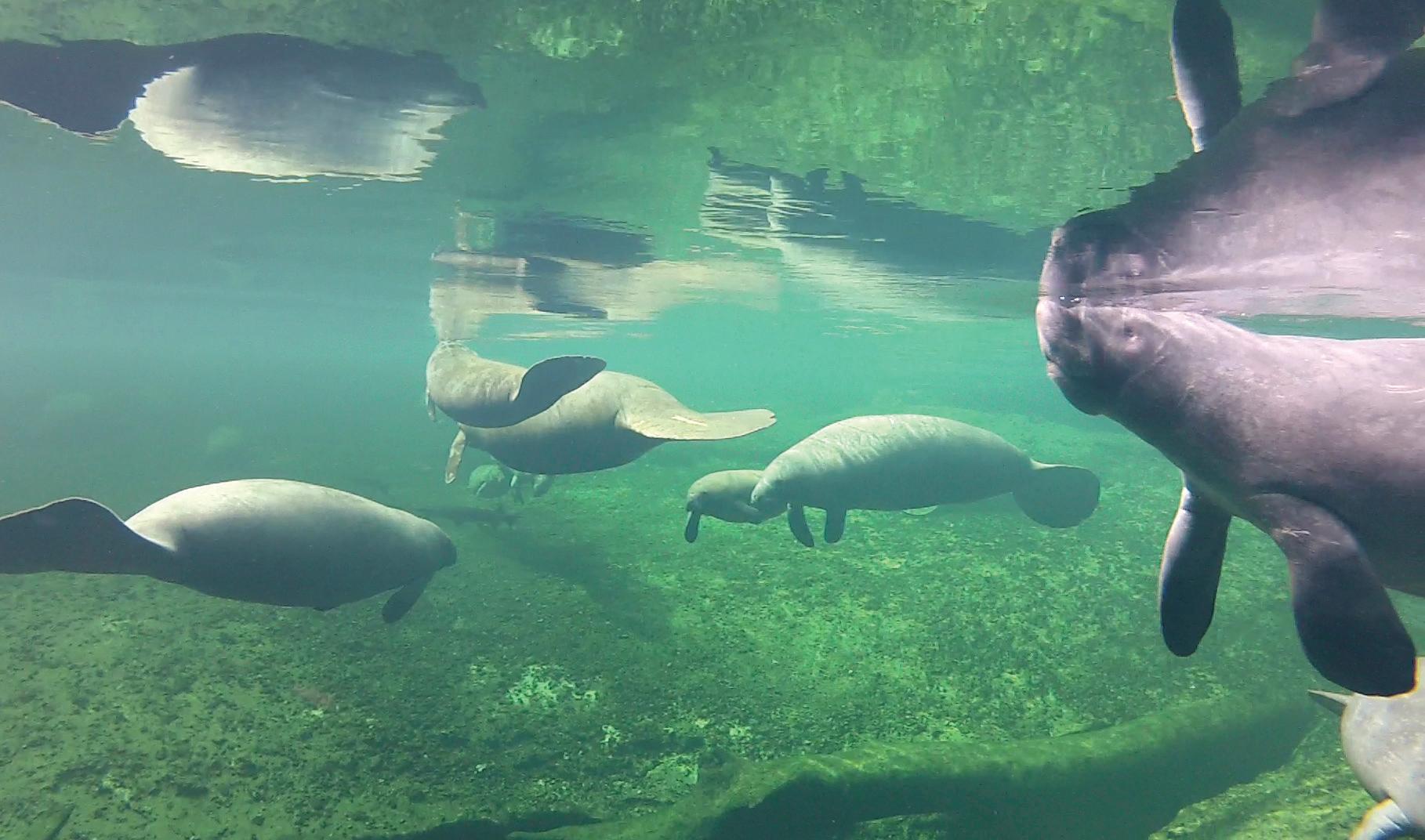
Large animals roam Florida waters, but fear not. Although huge, manatees only eat vegetation.
Manatees average 8 to 10 feet long, but some exceed 13 feet and weigh more than 2,000 pounds. In the 1970s, manatees numbered 1,500 to 2,000. The Florida population now numbers 7,000 to 10,000.
“The population has grown since the 1970s, but it’s still not at the point where we can declare them to be out of the woods,” says Cora Berchem, a manatee research associate for Save the Manatee Club. “People might see manatees in any Florida shallow coastal waters and associated rivers and lakes.
“Unfortunately, we lost more than 1,100 manatees just in 2021, when we had a massive die-off on the west coast of Florida.”
Consecutive years of bad algae blooms covered parts of Florida from 2020-23, particularly in the Indiana River Lagoon area east of Orlando. Algae blocked the sun, so seagrass died, leaving many manatees to starve to death.
“Luckily, seagrass is coming back, to an extent,” Cora says. “We definitely see things getting better, but it’s an ongoing problem. On the Gulf of Mexico side, manatees are doing OK, but they face things like red tide—especially in southwest Florida.”
Despite their blubbery appearance, manatees don’t like water below 70 degrees. In the winter, they head to natural springs where water temperatures stay 72 degrees all year.
“January is a really good time for people to see manatees in Florida,” Cora says. “Some good places to spot manatees in January are Blue Springs State Park in Orange City and Crystal River on the Gulf Coast.”
During warmer months, manatees migrate along the Atlantic
possibly as far north as New Jersey. On the Gulf Coast, some animals swim along the Panhandle to Louisiana or Texas. Manatees normally just barely move under the water. Unfortunately, that makes them extremely difficult to see. More than 90% of Florida manatees show scars from boat propellers. In fact, researchers use these scar patterns to identify individual animals.
In 1978, Florida established many no-wake or no-motor zones to protect manatees, but accidents still occur. All Florida boaters should watch for manatees. During warmer months, they sometimes travel in mating herds of 10 to 30.
“Unfortunately, boat strikes are still the No. 1 human-related cause of manatee injuries and mortalities in Florida,” Cora says. “We ask everyone to be extra careful when boating in a manatee area. A good sign that a manatee is around is a snout coming up to the surface so the animal can breathe. Also, a manatee makes a circular pattern on the water with its tail when swimming.”
Anyone who hits a manatee or spots an injured or distressed animal should call the Florida Fish and Wildlife Conservation Commission Wildlife Alert Hotline at 888-404-3922.
To watch manatees, visit the webcams at savethemanatee.org/ manatees/webcams. For more information, call 800-432-5646 or 407-539-0990, or visit savethemanatee.org.

John N. Felsher is a freelance writer, broadcaster, photographer and editor. An avid sportsman, he’s written more than 3,500 articles for more than 170 different magazines on a wide variety of outdoor topics. He also hosts an outdoor tips show for WAVH-FM Talk 106.5 in Mobile, Alabama. Contact him at j.felsher@hotmail.com or through Facebook.






All ages can find something new and exciting around every corner of the state. Filled with rich history, abundant natural beauty and diverse events all year, Florida has something fun for everyone.
Jan. 1
Polar Bear Plunge
Wash off 2024 with a plunge. Jump into the Santa Rosa Sound at 2 p.m. at Paradise Bar & Grill. Dippers and spectators—many dressed in costume— flock to the beach to participate. Registration begins at noon with a fee of $15 cash per person, which includes a Polar Bear Plunge T-shirt. Registration is $10 to participate without the T-shirt. For those in the fifth grade and younger, the cost is $5. Proceeds benefit the Pensacola Beach Chamber of Commerce to fund events on the island. www.pensacolabeachchamber.com/polar-bear-plunge; 850-932-1500
Jan. 1
Open Studio Painting
Need a space to let out some creativity? Come choose an art project. Admission starts at $40 and includes instruction, two hours of studio time and all materials provided for projects using acrylic paint, canvas and wood, or mosaic and resin. The Sun Bear Gallery and Studio is open Tuesday through Saturday. sunbeargalleryandstudio.com; 850-588-6861

Jan. 24-25
Peace River Pro Rodeo Classic
This event is sanctioned by the Professional Rodeo Cowboys Association and the Women’s Professional Rodeo Association for world championship points toward $16 million in prize money at the Wrangler National Finals Rodeo in Las Vegas. Gates open at 5 p.m., and the performance begins at 7 p.m.
www.peaceriverprorodeo.com; 863-781-0218
Jan. 4
Farm Dog
Start the new year with the Pensacola Dog Fancier’s Association Farm Dog event. Bring your friendly dogs and partake in events such as Farm Dog, ATT, Fast Cat, Fetch it, obedience and rally fun matches. There is also a shot clinic. Food trucks are on-site. Sports Authority sponsors this event.
www.pensacoladogs.org; 720-810-0135
Jan. 18
Art Under the Oaks
A festival of fine arts and original crafts is celebrated at San Pedro Church Gardens, 89500 Overseas Highway. Open from 9 a.m. to 4 p.m., there is a wide range of fine arts from vendors across Florida set in beautiful gardens with live entertainment, food, raffles and more. sanpedroparish.org/index.php/art-under-the-oaks; 305-852-5372








Jan. 19
An Afternoon in Paris
The Caladium Arts and Crafts Cooperative presents the 16th annual tea from 2-4 p.m. at 132 E. Interlake Blvd. Enjoy gourmet dining on tea sandwiches, fruit breads and desserts. There is also an auction, Parisian fashion walk and hat contest. Admission is $25. facebook.com/Caladiumartscrafts; 863-699-5940
Jan. 24
Roaring for Rescues Gala
Benefiting the Upper Keys Humane Society, this sixth annual gala at MM101 is a 1920s-themed event, but feel free to wear your favorite “Keys Classy” attire. Starting at 6 p.m., the band Retro Rebel takes the stage. A raffle, silent auction, dinner and music are included in the evening. Ukhsociety.org; 305-451-3848
Jan. 24-25
Trash to Treasure Sale
The Women of St. James’ annual sale has clothes, shoes, handbags, housewares, linens and jewelry from 8 a.m. to 1 p.m. Proceeds benefit charitable causes and activities throughout the year. 863-465-3215
Jan. 24-26
10th Anniversary Island Boat Show
The boat show features new boats from top brands through dealers around South Florida from 10 a.m. to 5 p.m. Boating accessories, merchandise, art and food are available at vendor booths. Hosted by Island Community Church, all profits benefit local and global missions and ministries of the church, as well as higher education scholarships for high school students. www.islandboatshow.com; 305-664-2781
Jan. 25
Keys Community Concert Band
Afternoon Delight performs animal-themed music and classic and pop favorites from 4-5 p.m. Bring your pet and family for the annual pet parade. The concert has play-along percussion and audience participation activities. keyscommunityconcertband.org; 305-394-1123
Jan. 25-26
58th Annual Broward Shell Club Shell Show
Scientific and artistic exhibits are judged by malacologists and artists from 9 a.m. to 5 p.m. at the E. Pat Larkins Community Center. Vendors sell seashells, jewelry, books, arts, crafts and home decor. Exhibitors come from as far away as Texas, with vendors from California, New Jersey and Florida. Activities include raffle and door prizes. Admission and parking is free. browardshellclub.org; 954-786-4585

Jan. 11-12
Florida Keys Celtic Festival
PHOTO BY LARRY BENVENUTI
Beginning at 10 a.m., families can enjoy Celtic rock and traditional music, Irish dancing, pipe and drum bands, sheepherding demonstrations, Highland games events, and a children’s glen and petting zoo. Enjoy tea with Mary Queen of Scots in the tea garden. Sunday Funday includes a shortbread-baking contest and the Zero K Nessy Fun Run. Grab your friends and sign up for the Locals Highland Games to see what it’s like to compete in a friendly Highland Games competition.
floridakeyscelticfestival.com


Jan. 31-Feb. 1
Florida Keys Quilters Mini Quilt Show
Quilts of various designs and sizes are featured alongside quilt-making demonstrations from 9 a.m. to 5 p.m. in the Key Largo Library Community Room in Tradewinds Plaza, 101499 Overseas Highway. The 2025 FKQ Raffle Quilt, “Tropical Waves,” is on view. Raffle tickets for the quilt are $2 per ticket or $5 for three tickets. The queen-size raffle quilt measures 91-by-85 inches. Quilts remain on display during February. Admission is free. www.tinyurl.com/FLKeysQuilters
Want to share a family-friendly event with the readers of Florida Currents? Head online and enter the details at tinyurl.com/FloridaCurrents or use the QR Code for easy access. Make sure to submit the item at least 60 days before the event (due to press deadline). If you own rights to a print-quality photo promoting your event, include it with photo credit information.






Each year’s end brings a new year’s beginning.
Many people see the new year as a fresh start and an opportunity to try something new. Here are some New Year’s resolutions to kickstart your 2025 gardening journey:
Have you ever bought a new plant and the second you bring it home and plant it in your yard, it immediately dies? Chances are it might not have been the right place for the plant.
When selecting a new plant, consider the light requirements, soil type, irrigation needs and its size when fully grown.
If you need help selecting the right plant for the right place, check out the Florida-Friendly Landscaping Guide to Plant Selection & Landscape Design at bit.ly/3ZmMgV6 or contact your local extension office.
There is a wealth of knowledge at your local extension office. Classes include various gardening tips and tricks, introduction to beekeeping, and more.
Water is one of the most vital resources on the planet. Humans, plants and animals all need it to survive.
As our population increases and agriculture-related industries grow, so does water use. A few ways to conserve water: Do it in the early morning or evening to avoid water loss from evaporation; install a drip-irrigation system in your garden; and create an irrigation schedule using automatic timers to prevent overwatering.
Did you know lettuce grows best during the cool season, and southern peas and sweet potatoes grow well during summer?
Following the Central Florida Gardening Calendar at bit.ly/4ivvsmm for your area of the state may help you maximize garden growth and decrease garden failures.


Throughout various times of the year, many counties across Florida have fertilizer ordinances prohibiting the use of fertilizers containing nitrogen and phosphorous. This is an effort to protect waterways from nutrient runoff.
If you need assistance with fertilizer recommendations and finding out the ordinances in your county, contact your local extension office.
For many gardeners, weeding is a daunting task when there is a full garden to get to. However, weeding 20 minutes a week makes a big difference. Preventing weeds from growing large enough to produce seeds helps reduce your weed population.
Your love for gardening may be a great opportunity to give back to your community.
The Florida Master Gardener Volunteer Program is an outreach composed of UF/IFAS Extension-certified volunteers trained to provide research-based horticultural education to Florida residents. Volunteer opportunities include community gardening, youth education, public outreach and education, and helping residents in the program’s Plant Clinic.
Orange County residents who would like to be added to the mailing list for information on the next recruitment season can submit their contact information at bit.ly/4eLd0Db.
For more information, email the Master Gardener volunteer coordinator in your county.

Clarissa Chairez is the Residential Horticulture/Master Gardener volunteer coordinator agent in Orange County. She has a Bachelor of Science in agriculture education and a Master of Science in agronomy. She has six-plus years in education and three-plus years in greenhouse/nursery management.
Behind the scenes, a network of people and facilities work together to ensure you have electricity when you flip the switch.
The amount of electricity generated and how much is sent to where it’s needed are typically coordinated and monitored by regional grid operators that essentially act as energy tra c managers.
Electricity is generated at a power plant, then sent across the grid to homes, schools and businesses.
As electricity demand varies throughout the day, grid operators, power plant operators and electric utilities work to forecast, plan and purchase enough electricity for everyone.
Ensuring communities have the exact amount of electricity they need is a challenging task, but behind the scenes, a network of industry experts make it happen every day.
Factors tha t Impact Electricity Supply and Demand
• Demand Surges
• Extreme Temperatures
• Infrastructure Costs and Availability
• Supply Chain Challenges
• Fuel Costs
• Federal and State Regulations
Conexon Connect is now connecting Glades Electric Cooperative members in select areas. Check out where we’ll be in 2025 on the map below.





ImpossiblePriceWas $299, Now
A h, my dear compatriots, allow me to share a tale of intrigue and fortune. Picture this: a venture into the heart of a South American goldmine, where the earth yields its treasures to the daring and the cunning. With every step as we follow Diego, our mining master, the air thickens with anticipation, the scent of wealth mingling with the thrill of the unknown.

ere, amidst the darkness, lies the prize we seek — veins of gold, glimmering like stars in the night sky.
“Been a
—M.L. Port St. Lucie, FL

Yanacocha Gold Mine, located near Lima, Peru, is the largest gold mine in South America and the fourth largest in the world.


Now picture this: a ring, not just any ring, mind you, but a masterpiece crafted to adorn the fingers of the discerning. Crafted with meticulous care, each piece encasing ribbons of 24 karat gold in a Tungsten setting, whispering tales of luxury and prestige.
Meticulously crafted and amazingly comfortable, you will not find anything like this in a jewelry store. As gold prices skyrocket, we have been able to craft this and hold the price under $100 making it exclusively available with only 495 reserved for this ad. And of course we offer a 30 day no questions asked guarantee.

A symbol of power and sophistication. is isn’t just a ring, it’s a statement. On any adventure, let this ring be your companion, a silent witness to your every triumph. Ahhh… the rush of a gold rush.


Jewelry Speci cations:
• 24k gold embedded in black-finished tungsten
• Whole Size 8 -14
Men’s Gold Rush Ring
$299 $99* + S&P Save $200
*You must use Insider Offer Code GRR190-01 to get this price.







Trustee seats for District 1 (Moore Haven), District 3 (Ortona/Palmdale) and District 4 (Lakeport) are up for election this spring. Members seeking a nomination by petition have a deadline of Jan. 9 to submit signatures.
For eligibility requirements and more details, visit www.gladeselectric. com/about-us/board-of-trustees. If you have questions, email communications@gladeselectric.com.
This year’s elections take place in March and April by electronically voting through SmartHub or by mail-in ballot. The 2025 Annual Meeting is scheduled for April 9. Look for complete voting details in our February issue of Florida Currents.





Know a high school senior planning for college? We offer $5,000 scholarships
Eight $5,000 scholarships are awarded to high school seniors each year by the Glades Electric Educational Foundation. Students must be served by Glades Electric to be eligible for the scholarship. Visit www.gladeselectric.com/community/student-programs-information or GEC offices for details and applications. The deadline to apply is Feb. 20.






Are shorter nights leaving you in the dark?

Glades Electric has outdoor lighting solutions to help
Whether you need to showcase your place of business after dark or just want the peace of mind that comes from having a little extra light in your yard, GEC offers a solution.
Glades Electric Cooperative has outdoor lights at affordable monthly rates. Getting started is easy. Visit www. gladeselectric.com/member-services/outdoor-lighting for details then call 863-946-6200.





























































The best walk-in tub just got better with breakthrough technology! Presenting the all new Safe Step Walk-In Tub featuring MicroSoothe. ® An air system so revolutionary, it oxygenates, softens and exfoliates skin, turning your bath into a spa-like experience. Constructed and built right here in America for safety and durability from the ground up, and with more standard features than any other tub.
✓ Heated seat providing warmth from beginning to end
✓ Carefully engineered hydro-massage jets strategically placed to target sore muscles and joints
✓ High-quality tub complete with a comprehensive lifetime warranty on the entire tub
✓ Top-of-the-line installation and service, all included at one low, affordable price You’ll agree – there just isn’t a better, more affordable walk-in tub on the market.








Electric Cooperative, Inc. “Neighbors Working for Neighbors”
CONTACT US
863-946-6200 (member services) 844-201-7203 (24-hour phone payments) www.gladeselectric.com
7 a.m. to 6 p.m. Monday through Thursday
26733 U.S. Hwy. 27
P.O. Box 519
Moore Haven, FL 33471
214 SR 70 W. Lake Placid, FL 33852
REPORT AN OUTAGE
Via the SmartHub app ~ 863-946-6200 (24/7 outage reporting)
Please have your account number ready.
BOARD OF TRUSTEES
Lee Henderson, President, District 6 Highlands Park, 863-633-9281
Barney Goodman, Vice President, District 2 Hendry County, 561-414-8737
Shannon Hall, Secretary/Treasurer, District 4 Lakeport and Brighton, 863-946-3242
Donnie Lundy, Trustee, District 1 Moore Haven, 863-946-0402
Mike Pressley, Trustee, District 3 Ortona and Palmdale, 863-673-9158
Brad Oxer, Trustee, District 5 Venus and Hicoria, 863-441-1866
Fred Tagtmeier, Trustee, District 7 Lorida, 863-214-4994
Vicki Pontius, Trustee, District 8 Lake Josephine, 863-414-2917
Angela Hodges, Trustee, District 9 Okeechobee, 863-801-3140
The Board’s next meeting is at 9 a.m. Jan. 30 at Moore Haven Headquarters Office. Any changes are posted in the lobby of both district offices.
EXECUTIVE STAFF
Jeff Brewington, CEO
Renee Bass, Chief Administrative Officer
Courtney Brown, Chief Personnel Officer
Jennifer Koukos, Chief Communications Officer
Jennifer Manning, Chief Financial Officer
Michael Roberge, COO and Assistant General Manager
Celebrating Glades Electric Cooperative’s legacy and future
The new year ushers in a new milestone for Glades Electric Cooperative.
Your cooperative celebrates its 80th anniversary on Jan. 25. We are pleased to have been providing power to Heartland residents and supporting our communities for eight decades.
We were founded by local neighbors to meet the needs of the unserved all those years ago, and we continue the cooperative mission of serving the unserved today in new, 21st century ways.
Jan. 3 marks the first anniversary of connecting GEC members to the cooperative’s fiber network, providing big city internet connectivity. We now have more than 1,500 members connected and will very soon have more than 3,500 members connected to this era’s essential service: high-speed internet. If not for the cooperative once again stepping up for its members, they would remain disconnected from the modern amenities of the day.
There is a lot going on in our territory, and it is causing growing pains, leading to enormous capital investments in our distribution system as well as our fiber network. In the end, we will have a more modern and resilient system. We will be ready to serve the 60-, 700and 6,000-unit developments coming our way and more.
However, our rates will be elevated for the next couple of years to carry us through it and keep our lenders happy and continuing to lend. I suspect we’ll be in a position to start bringing rates down in 2027, barring any catastrophes in the energy market. Until that time, know we always have you in mind and do our best to bring you the best services at the lowest possible costs.
We are building for a better future! We wish you and yours a year of good health and blessings to come in 2025.

